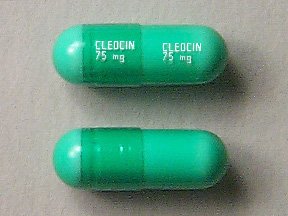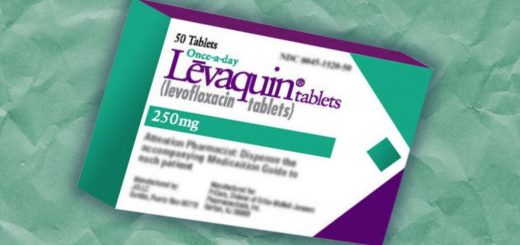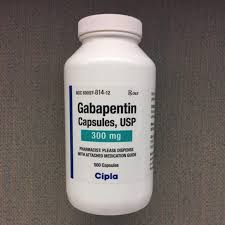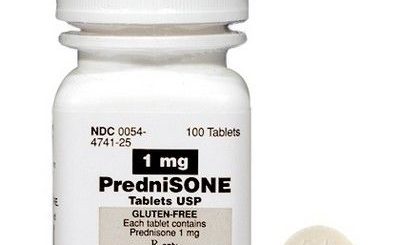Cleocin 300 mg

Cleocin

Clindamycin is a prescription pain medication that is effective against many different types of severe bacterial infections. The drug most often used to combat the complications of staphylococci and streptococci that do not meet the most common antibiotic drugs. It is in the capsule and a liquid, and usually prescribed to be taken three or four times a day for about two weeks. There are risks of side effects and potentially serious reactions from taking clindamycin, but patients may limit their chances of experiencing health problems by talking with their doctors and follow their recipe exactly.
Physicians usually try several other less powerful antibiotics before prescribing clindamycin due to their potential to cause serious side effects. The drug is sometimes prescribed as a treatment for first year, however, in patients who are allergic to penicillin. This usually reserved for severe lung infections, but can also be used to combat bone abscesses, skin, intestines or other organs.
Clindamycin is an inhibitor of bacterial protein synthesis, which means it works by stopping bacterial growth and cell reproduction. The drug seeps into bacterial RNA and prevents the creation of new proteins. As a result, stop the spread of infection and all existing pathogens will eventually die.
In most cases, patients learn to take a carefully measured dose of clindamycin every six hours for at least 10 days. The dosage amount can vary depending on the type and severity of infection, but most adults take a dose of 300 milligrams. Pediatric patients are usually prescribed as smaller quantities, which are determined by age and weight. Both capsules and liquid solutions should be taken with a full glass of water to prevent irritation of the throat and the lining of the stomach.
The most common side effects when taking clindamycin are minor outbreaks of nausea, vomiting, diarrhea and abdominal cramps. A person may also temporary symptoms similar to flu, such as joint pain, chills, fever and fatigue. The drug can lead to increased antibiotic-resistant bacteria in the intestine, which sometimes causes severe diarrhea and bloody or watery stools for several days. After clindamycin use a very small number patients and intestinal infection develops a lasting, potentially fatal condition called colitis which may require the use of medications over the long term or a surgery to correct. Most people who use the drug exactly as prescribed and attend regular checkups with their physicians are able to make full recoveries in less than a month of treatment.

The use of prophylactic antibiotic therapy in healthy patients undergoing oral surgery is a constant, despite this being a controversial issue. The American Heart Association (AHA) states as the first choice prophylactic antibiotic penicillin as a percentage of the population is allergic to this antibiotic, in this case determined that Clindamycin is a drug indicated for this purpose. The aim of this study was to determine the effectiveness of clindamycin as antibiotic prophylaxis in third molar surgery. To this end were randomly selected 90 patients with indication for surgery of the third molars, from the dental office Graduate School of Dentistry, VCU who were assigned to drug treatment setting 6 groups of 15 patients: group A received 2 capsules of 300 milligrams of clindamycin to be administered one hour before surgery. The A1 group received 4 capsules of 500 milligrams of amoxicillin (Trimoxal) for administration one hour before surgery. Group B received 12 capsules of 300 milligrams of clindamycin to be administered at a rate of 1 capsule every 6 hours orally, starting one hour before surgery until three days after third molar surgery. The B1 group received 21 capsules of 500 milligrams of amoxicillin (Trimoxal) to be administered at a rate of 1 tablet every 8 hours orally for 7 days after third molar surgery. Groups C and C1 did not receive antibiotics but Placebo. In addition, all therapy groups received anti-inflammatory analgesic and 600 milligrams of ibuprofen (Motrin) every 6 hours, orally, for three days. Several controls were performed to assess the presence of pain, exudate, odor and bad taste as symptoms and signs of infection. The evaluation results showed that clindamycin is as effective as amoxicillin in any of the proposed therapeutic regimens. According to our results is advisable to indicate the outline of a single dose of clindamycin before surgery in patients allergic to penicillin.
Do not use clindamycin
If you are allergic (hypersensitive) to this active, lincomycin or any of the other components of the specialty pharmaceutical prescribed. If you think you may be allergic, consult your doctor.
Allergy symptoms may include
- Crisis of asthma, shortness of breath, audible wheezing or rapid breathing.
- More or less sudden swelling of face, lips, tongue or elsewhere in the body. It is especially critical if it affects the vocal cords.
- Hives, itching, rash
- Anaphylactic shock (loss of consciousness, paleness, sweating, etc).
Take special care with clindamycin
- If you have kidney disease, should be considered a dose reduction and / or increase the interval between doses.
- If you have liver disease, should be considered a dose reduction and / or increase the interval between doses.
- If during treatment with clindamycin diarrhea is persistent and intense, it should be stopped immediately and establish a diagnosis and appropriate therapeutic measures. This situation may also occur after treatment. The diarrhea may be associated with blood or mucus in the stool and may evolve into acute colitis. Inform your doctor for proper treatment is instituted.
- During prolonged therapy should be analysis of liver and kidney function. Be estimated serum levels of clindamycin.
- If you have manifested hypersensitivity to other antibiotics. In this case clindamycin should be used with caution.
- If you have lactose intolerance.
If you become pregnant, contact your doctor immediately. If a doctor prescribes another medicine, let them know you received clindamycin.
Check with your doctor regularly the course of the condition giving rise to the administration of clindamycin. Maybe there is some reason that has prevented you from properly receiving the indicated doses and it may induce your doctor to erroneous conclusions about treatment.
You should not restart on its own initiative clindamycin treatment without first talking to your doctor, or recommend your shot at another person, even if have the same symptoms you have. Nor is it advisable to interrupt or reduce the dosage without considering the opinion of your doctor.
If during treatment with clindamycin you get ill, consult your doctor immediately.
If you use more medicine than you should immediately consult your doctor or pharmacist.
In case of overdose or accidental ingestion, consult the Toxicology Information Service in your country.
If you forget a dose, take the capsule as soon as possible, continuing treatment as prescribed. However, when it is near the next shot, it is best not to have missed the capsule and take the following schedule.
Do not take a double dose to make up for missed doses.
If you have any further questions on the use of this product, ask your doctor or pharmacist.
Always follow dosing instructions provided by your doctor clindamycin. Consult your doctor or pharmacist if you have questions. Follow the instructions in preference to those listed in this website, which may be different. Ask your doctor to explain any question you do not understand, contained in the instruction booklet that accompanies the drug.
The capsules should be swallowed with a glass of water.
Adults, adolescents over 12 years and older
The usual dose is 150 to 450 mg every 6 hours.
Children
The usual dose is 3 to 6 mg / kg every 6 hours. The dose may be increased or decreased depending on the severity of infection (not to exceed the adult dose). The dosage range is 8 to 20 mg / kg / day divided into 3 or 4 doses.
In hemolytic streptococcal infections, it is recommended treatment with clindamycin capsules for at least 10 days to reduce the likelihood of subsequent rheumatic fever or glomerulonephritis.
Clindamycin injection:
Adults: moderately severe infections:
1.2 to 1.8 g of clindamycin per day in 3 or 4 equal doses intravenously or intramuscularly.
Serious infections: 2.4 to 2.7 g of clindamycin per day in 2, 3 or 4 equal doses intravenously or intramuscularly.
Severe infections: The dose may be increased, although the maximum recommended dose is 2.7 g of clindamycin per day.
Children: Your doctor may prescribe the use of this medicine in children in cases of strict necessity despite containing benzyl alcohol as an excipient.
Newborns: 15-20 mg / kg body weight per day in 3 or 4 equal doses intravenously or intramuscularly.
In light-weight premature infants may be sufficient at lower doses (15 mg / kg per day).
If you think that the effect of medicine is too strong or too weak, talk to your doctor.
If you have any further questions on the use of this product, ask your doctor or pharmacist.







